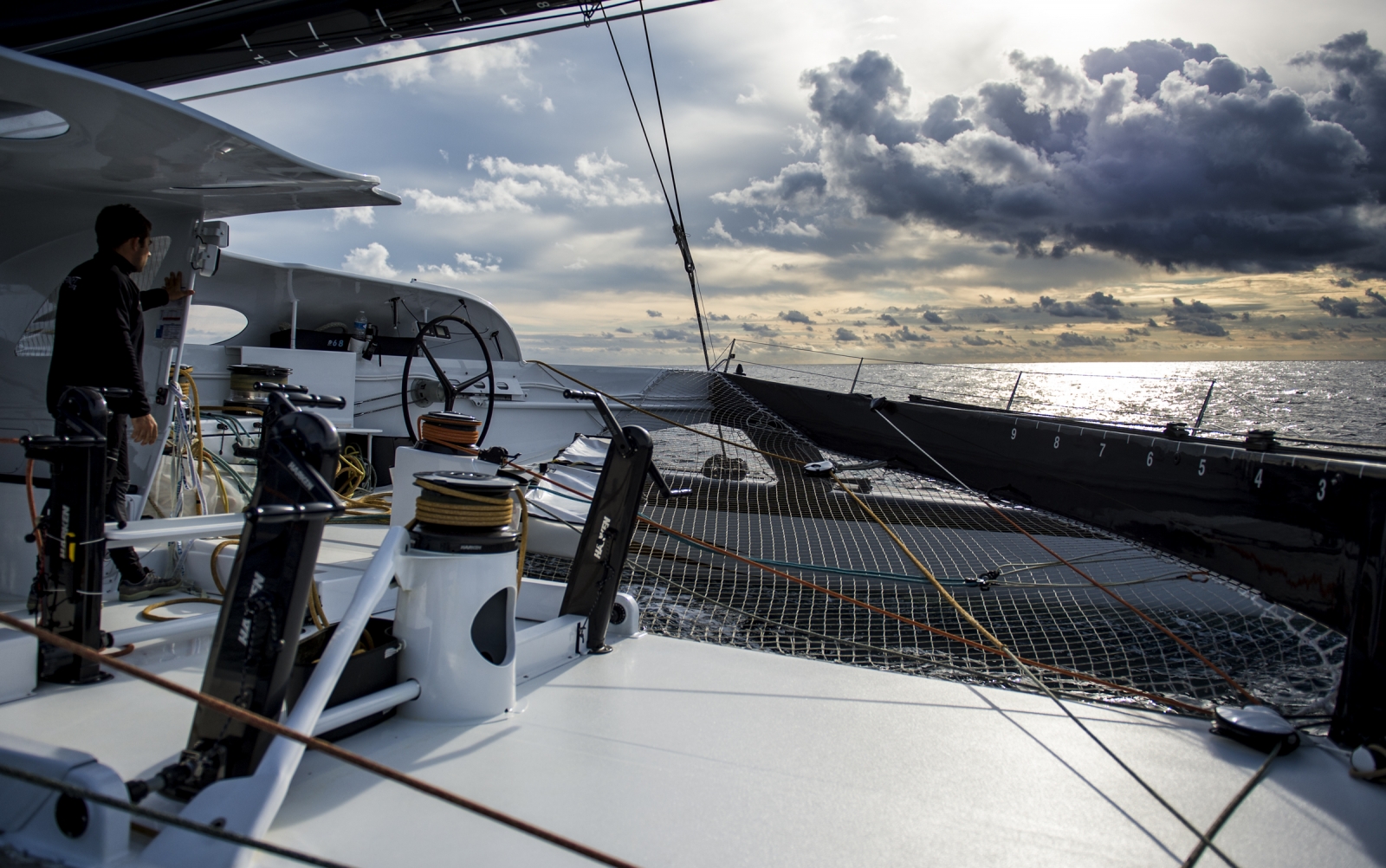Designed for crewed sailing, the maxi-trimaran Spindrift 2 has never had autopilot. A small revolution has taken place on board since the decision to compete in the Route du Rhum. It is a fact that, sailing solo, Yann cannot be on the helm 24 hours a day. He has to sleep, and eat, but he also has to set the sails, make manoeuvres, or work on the computer on board, so, needless to say that without an autopilot, sprinting solo across the Atlantic would be impossible. But it took some ingenuity to devise a system suitable for a machine of this size. Meet Yoann le Quintrec, ‘Mr Pilot’ from Spindrift racing.
“The racing boats like those in the Vendée Globe or our future opponents in the Ultimate Class on the La Route du Rhum mostly use hydraulic pilots with actuators that operate the rudders,” Le Quintrec says. “That was an option that we had to discard because everything is supersized on board Spindrift 2 and there was no system that allowed us to have a strong enough lever arm. So, we had the idea of studying electrical pilots developed for large multihull cruisers. It was an idea that soon proved worthwhile.”
A true artificial second helmsman
Like the bike on the deck that allows Guichard to winch sails with his legs, the Spindrift racing technicians have again been testing commercially available systems that they then customised. On each tack, the team installed a mass-produced electric pilot motor with a cog and a chain connected directly to the helm, which reacted as Guichard would. The control therefore is not on the rudder pedals inside the boat as with normal actuators, but rather on the helm, a bit like as if there was a teammate.
A dry run of the Route du Rhum
“We installed the first prototype for the delivery between Lorient and Portimao (Portugal) in 2013 before the record attempt for Discovery Route and then on the return transat from Miami,” Le Quintrec says. “The tests were conclusive, but we don’t enough perspective to know how long the motor is going to last. So I installed a test bench in the boatyard in Lorient this winter. I set up the whole system on the ground and added huge elastic bands to simulate big pressures on the helm, then entered a route into the computer with course changes, manoeuvres etc…Everything went on non-stop for 200 hours, i.e. a little more than eight days, almost the equivalent of a Route du Rhum (the record is 7 days and Groupama 3 took 9 days in 2010). The assessment was very positive. We had proved the value of the solution and two new pilots were installed on board.”
 A remote-controlled boat
A remote-controlled boat
The pilot works as they do elsewhere. It is managed by a system that can be programmed:
– In compass mode: we set a course to follow whatever the wind shifts.
– In wind mode: we set an angle to the wind, which it keeps to even if there are sudden shifts.
– And it is also possible to trigger a tack or a gybe with the pilot.
Sensors continuously collect information on wind, heading and boat speed. That is all processed by a central unit at the chart table, which acts according to the mode chosen by the skipper. Guichard can control the pilot either with buttons on the control monitors under the cockpit or with a remote control that he can wear on his wrist. This mobile solution can control the pilot from anywhere on the boat, which is very useful if has go forward or inside the boat and of course in case of emergency.
Guest of the episode: Yoann Le Quintrec
Yoann Le Quintrec, from Morbihan, is a specialist in electrical, electronic and computer systems. After eight years as head of this area for Team Banque Populaire, he joined Spindrift racing and brought with him his mastery of navigation systems and multiple sensors. In a team with three boats, where electronics are a key element of success, Le Quintrec’s role within the team is essential. His bio here.
To watch the episode 14 : Click here
To replay all the series : Click here
